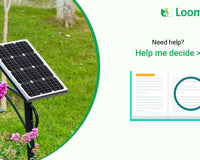The number of light and bulbs that can be powered by a solar panel depends on several factors, including the capacity of the solar panel, the wattage of the light bulbs, and the available sunlight in the location where the solar panel is installed.
To calculate an estimate, you need to consider the following information:
-
Solar Panel Capacity: Solar panels are rated in terms of their capacity to generate electricity, usually measured in watts (W). For example, a common residential solar panel may have a capacity of around 250-350 watts.
-
Light Bulb Wattage: Determine the wattage of the light bulbs you intend to power. Compact fluorescent lamps (CFLs) typically range from 7 to 30 watts, while incandescent bulbs can range from 40 to100 watts or more. LED bulbs are the most energy-efficient and usually consume 4 to 15 watts.
-
Available Sunlight: The amount of sunlight the solar panel receives affects its energy production.This can vary based on factors like location, season, weather conditions, and shading.
To estimate the number of light bulbs a solar panel can power, you can use the following general calculation:
Number of light bulbs = Solar panel capacity (in watts) / Light bulb wattage (in watts)
For example, If you have a 250-watt solar panel and are using 10-watt LED light bulbs:
Number of light bulbs = 250 watts / 10 watts = 25 light bulbs.
Please note that this is a simplified estimate and doesn't account for factors like battery storage, energy losses, and variations in sunlight. Additionally, the actual performance may differ based on specific conditions. It's always recommended to consult with a professional installer of loom solar they can guide you properly about your all requirments to your specific situation.












